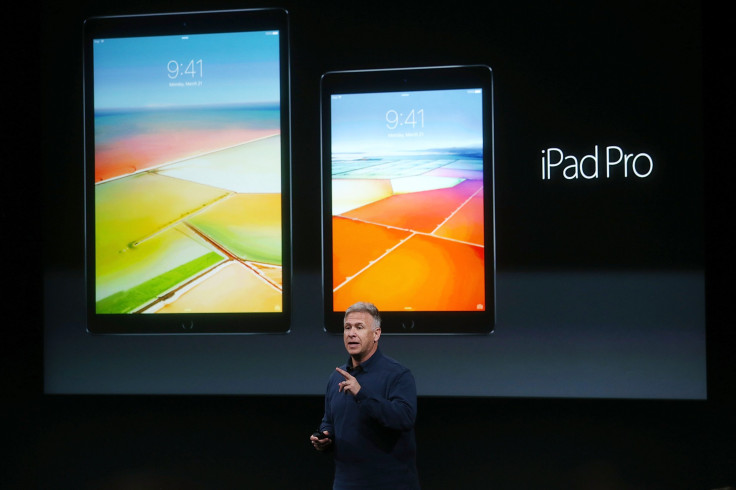9.7-Inch iPad Pro vs. Surface 3: Microsoft’s 10.8-inch Tablet Wins On Price, But Apple Rules On Camera, Display

Apple on Monday unveiled the 9.7-inch iPad Pro, which the company hopes will encourage people to upgrade from the 600 million-plus PCs in use that are more than 5 years old. Apple isn’t the only one looking to entice owners of older PCs with laptop-tablet hybrids: Microsoft’s 10.8-inch Surface 3 may appeal to those already familiar with a Windows interface. The competition is heating up, but the two tech giants have radically different answers to the issue of how to persuade laptop owners to buy a tablet.
Apple has gone for a tablet-first approach where the iPad runs its iOS mobile operating system on a larger screen. Initially debuting on the iPhone, iOS has slowly matured to incorporate iPad-specific features like multitasking, all while retaining its interface designed specifically for touch. The iPad’s App Store, the only way in most cases to install apps, has expanded to cover most people’s needs and even features Microsoft Office.
On the Surface side, Microsoft has tried hard to develop a touch-friendly interface for Windows 10, even though historically Windows has been a keyboard and mouse affair. Running Windows means the Surface will run the wealth of Windows apps on the market, from professional photo editors like PhotoShop to the latest blockbuster games. There is a Windows Store, but installing apps from outside the store is as simple as ever.
On price, it seems like no contest. At $499 for a 64GB Wi-Fi model, the Surface 3 wins. The 32GB Wi-Fi iPad Pro is priced at $599, $100 more than the Surface 3 and with just half the storage. Currently the Surface 3 is on sale for $100 off.
Both machines support attachable magnetic keyboards and styluses. On the iPad side, the optional Pencil is priced at $99, while a smart keyboard is $149. For the Surface, the keyboard cover is $129, while the Surface Pen is $59. Those conscious of price may want to opt for the Surface.
For external accessories, the Surface has the upper hand. The tablet features built-in video out and USB, while full keyboard and mouse support means it can quickly transform into a desktop computer with an external monitor attached. It also means there is no need to buy special Surface accessories just to use peripherals.
The iPad Pro has made strides to rectify its lack of a USB port, with the Lightning port supporting more and more accessories by the day. Apple now also sells a Lightning-to-USB dongle, but it’s limited by app support and external hard drives are still a no-go.
When it comes to portability, though, it’s no contest. The iPad Pro is incredibly light, weighing just 0.96 pounds (437 grams). The Surface 3, on the other hand, weighs 1.37 pounds (621 grams). It may not sound like much difference, but after a day lugging around a laptop, lightness will count.
The iPad Pro also wins with display. Its 2048x1536 screen far outshines the Surface’s 1920x1080 display, and the iPad features special True Tone technology that will make colors appear more vibrant by matching them better to the surroundings.
The iPad Pro also has a far superior camera, the same 12-megapixel shooter found in the iPhone 6 along with a dual LED flash that adapts the colors to match the room. The Surface’s 8 megapixel rear camera may be enough, however, particularly for those less interested in taking pictures.
The iPad Pro is a strong competitor to the Surface 3. It offers a premium experience in a lightweight body while retaining the touch-first interface that made the iPhone popular. The Surface 3 gives it a run for its money, though, offering many of the same selling points but in a cheaper package.
© Copyright IBTimes 2025. All rights reserved.





















